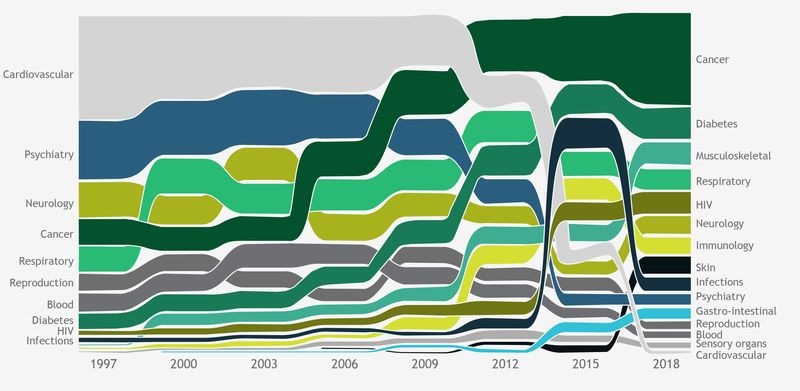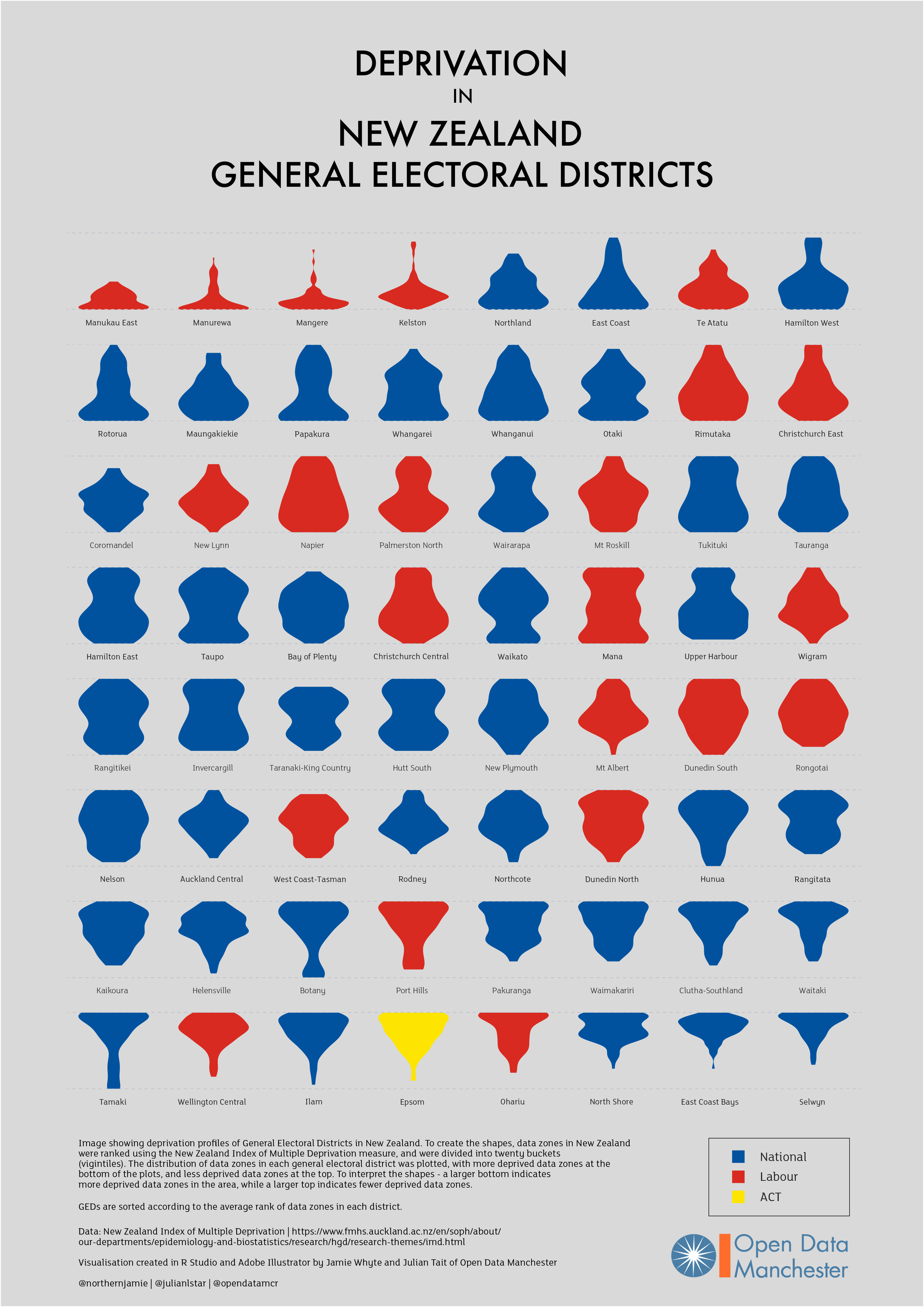December 17, 2019
Briefly
- Bloomberg News writes about drug prices. Their point is expensive cancer drugs, but their graph also shows how drugs for heart disease have become much, much less expensive as they go off patent (the light-grey area)

- Census 2018 small-area data now available. These go down to SA1, the smallest area unit for published results now. About two-thirds of SA1s are a single meshblock, but some are multiple meshblocks to get the population size higher. Read the footnotes (always, but especially with the 2018 census)
- Jamie Whyte of Open Data Manchester has extended his inequality graphs to NZ (click to embiggen). Each blob shows a general electorate, and the width of the blob shows the proportion of people at various levels of the Index of Multiple Deprivation. So, for example, Manurewa is mostly high-deprivation, Selwyn (bottom right) is low. In the middle of the graphic, Hutt South and New Plymouth have opposite shapes: one has most people in the middle, the other has more people at the bottom and the top. There are two important caveats here compared to the UK version: this is based on everyone living in a general electorate regardless of which roll they are on, so it misses the Māori electoral roll and it misses the impact of List MPs.

- Twitter thread from Peter Aldhous (of Buzzfeed), on DNA testing and media coverage over the past decade
- NZ is still under-vaccinated for measles. At the moment there’s still a shortage of vaccine, but at some convenient point in the future you should make sure you’ve had your two shots.
- Figure.NZ is seven years old — 44,000 graphs of NZ data
- ‘Even if Kāinga Ora’s intentions were good, she was still concerned about “a creeping, increasing type of surveillance capacity being built … without mechanisms that allow communities to be really engaged in the process”‘. Donna Cormack on the plans to put lots of sensors in state houses. There are obvious good uses of this sort of data, and bad uses, and the project would be better off with more information about how the data would be restricted to good uses (if that’s the plan).
Thomas Lumley (@tslumley) is Professor of Biostatistics at the University of Auckland. His research interests include semiparametric models, survey sampling, statistical computing, foundations of statistics, and whatever methodological problems his medical collaborators come up with. He also blogs at Biased and Inefficient See all posts by Thomas Lumley »